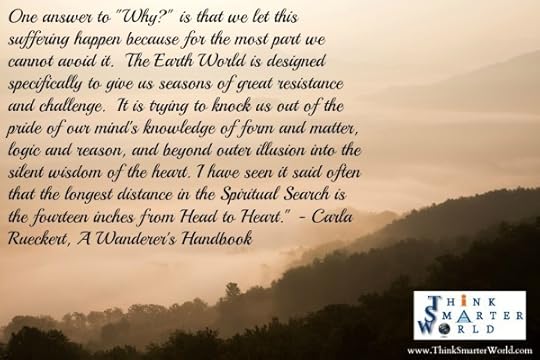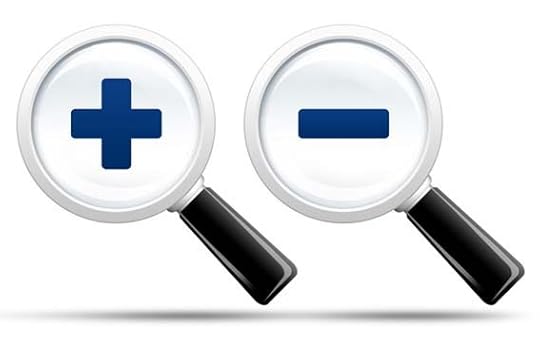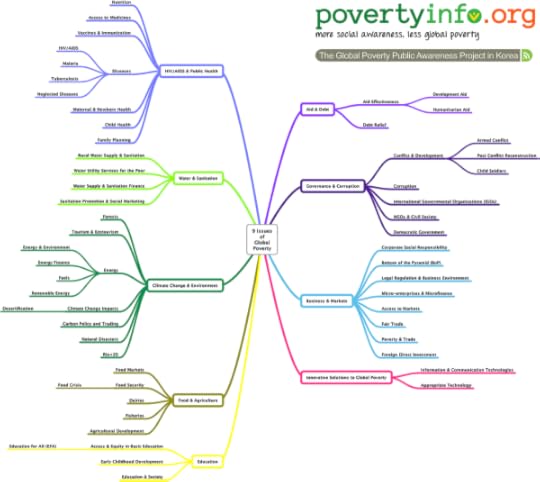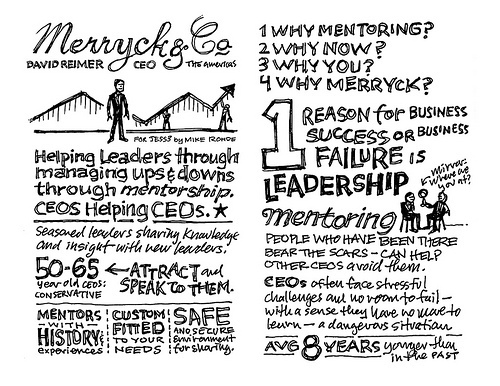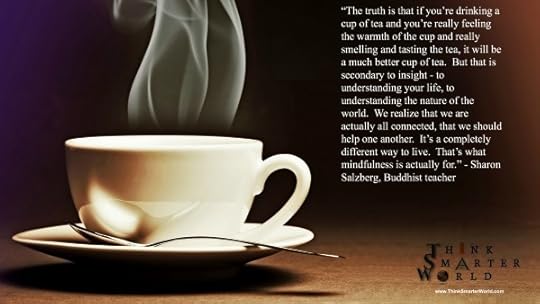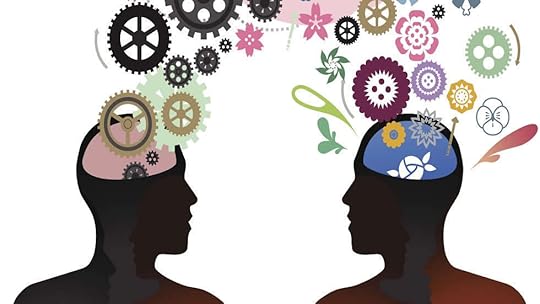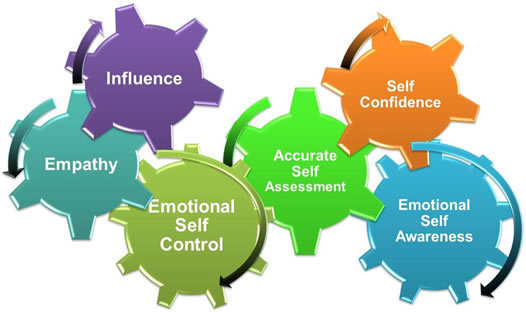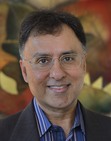Jay Kshatri's Blog, page 12
March 7, 2015
Carla Rueckert on Moving from Head to Heart [Quote]
March 1, 2015
Start Zooming to Rapidly Accelerate Your Learning
When I want to learn something new – really learn it – I use a process of Zooming Out – seeing the big picture and identifying all the connections to that topic – and then Zooming In – focusing down into investigating the details. Here are the key components of the process:
Zooming Out
Zooming Out is a form of Systems Thinking.
SI Expert Daniel Kim defines it this way:
In the most basic sense, a system is any group of interacting, interrelated, or interdependent parts that form a complex and unified whole that has a specific purpose. The key thing to remember is that all the parts of interrelated and interdependent in some way. Without such interdependencies, we have just a collection of parts, not a system.
Not every thing you want to learn about lends itself to a Systems Approach, but in a highly complex world, any big issue that we are trying to tackle usually does. Poverty, Education, Inequality, Health Care, etc., are all topics that one can only understand by looking at the entire eco-system these issues operate within. And, in this case, it just happens that each one of the four examples I just stated, interact with each other – so we can have complete systems interacting with other systems. For example, trying to tackle the issue of poverty without looking at education or rising inequality is pointless. In general though, any topic you are interested in understanding at a deeper level will benefit from a Systems Thinking approach.
Zooming Out is about Visualization
Seeing data and information visually makes it easier to spot connections and gives understanding of what’s most important in a large subject area. A good tool to use when Zooming Out is a Mind-Map. It helps to capture all the different aspects of your subject and arrange them with some level of organization. Below is a very good mind-map example from povertyinfo.org which breaks down their assessment of the major drivers of global poverty (you can click on the image to see it more clearly in a separate window).
By mind-mapping in this way, you can take any topic and first identify the major components or drivers of that issue. You can then go down another level to identify the sub-drivers within each of the major issues. By doing this you are consciously identifying the components of a topic which will then lead you to visualizing how they are related. Your Mind Map will then identify for you where you need to drill down further to identify root causes (zooming in phase). You can go much further with the data you gather, and there are many Systems Thinking tools that you can use to identify how various components are influencing and affecting each other. To get a good concise overview – see Daniel Kim’s excellent primer on Systems Thinking. In terms of Mind Mapping apps, I am on a MAC platform and use MyThoughts HD. It works beautifully and intuitively. There are however many chooses for both OS X and Windows that you will find on the web – both free and paid.
More is Better in this Phase
You don’t want to limit yourself also to just one domain area. Look at multiple domains of knowledge – for example, if you are investigating a scientific subject – venture out to find the connections in artistic and philosophical areas. This brings different perspectives to the topic and is a holistic approach to learning. You want to conduct a complete “360 degree” look in this phase. Much of what happens in society today is people limiting their “view point” to a small slice of available data. When doing this, they miss the connections and ultimately come away with misleading and incomplete understanding of a subject or issue.
Ask a lot of Questions
A key tool for identifying all the components of a system as you mind map, is to ask a lot of questions. Good questions will guide you into finding the best answers. This also helps when you go to research things on Google. In fact, when a typical Google search query will yield 95,000,000 hits, your ability to narrow down your results to the best ones is incumbent on specifying your question with more rigor. I like the five major questions of Who, What, When, Where and Why supported by the four D’s to identify high quality sources of information -Doubt, Detect, Discern, and Demand:
Doubt — a healthy skepticism that questions everything.
Detect — a “nose for news” and relentless pursuit of the truth.
Discern — a priority for fairness, balance and objectivity in reporting.
Demand — a focus on free access to information and freedom of speech.
Zooming In
When we are ready to enter the Zooming In phase, then Researching, Learning, and Retention become most important. A lot of what I learn comes from books, but also in-depth articles, journals, webinars, video tutorials, and podcasts. Being an effective note taker is essential to capture key information, but so is post-processing the information in way that your brain categorizes and remembers effectively. There are some very good resources to help synthesize information more effectively that I have found very useful:
How to Read a Book: The Classic Guide to Intelligent Reading, by Mortimer Adler
Shane Parish at the Farnam Street Blog has written a number of excellent articles on the subject – A System for Remembering What You Read, How to Read a Book, How to Retain More of What You Read, A Process for Taking Notes while Reading, and Learn Anything Faster with the Feynman Technique
And if you are reluctant to mark up and take notes in a physical book (as I have been in the past), then Damian Farnworth makes a compelling case for why it’s absolutely necessary in order to master the contents of the book – How to Absorb a Book into Your Bloodstream
Another resource I would recommend in terms of note taking and increasing the effectiveness of you learning process is learning how to “SketchNote”. Illustrator and Graphic Designer Mike Rohde is the leading proponent of SketchNoting – a concept he defines as:
Rich visual notes created from a mix of handwriting, drawings, hand-drawn typography, shapes, and visual elements like arrows, boxes, and lines.
Rohde explains that SketchNoting’s effectiveness is based on the Dual Coding Theory:
The Dual Coding Theory proposed in the 1970’s by Allan Paivio, suggest that the brain processes information using two primary channels: verbal (concepts as words) and visual (concepts as images). When both modes are active, your brain creates and associative library of words and images with mental cross-references between them. SketchNoting therefore engages your whole mind and it helps you remember more detail. Sketch noting activates verbal and visual modes to capture concepts. Your whole brain is absorbed in hearing, synthesizing, and seizing ideas.
Here is an example of a Mike Rohde SketchNote. As you can see it is a combination of different styles of text, basic graphics, different font sizes, and some other visual elements.
There are many people doing SketchNoting now and a google search will give you plenty of interesting examples – from basic sketchnotes to very complex ones with professional drawings. The good news is that you don’t need to be an expert drawer to do sketchnoting. In fact, in Mike Rodhe’s book – The SketchNote Handbook – he shows how you can do most illustrations with just five shapes.
Isolating and Going Deep
In photography, when we really want to understand a subject, we pull out the macro lens and try to isolate and capture a unique essence of what we are photographing. Zooming in on information is similar. This is where breakthrough insights come from. It also helps to look at the same thing but from many different view points. Read a book on the same subject by different authors – each will explain a concept differently. Some ways will be more effective in conveying the information to you.
Repetition Matters
The conscious brain doesn’t fully absorb and make sense of all the information the first time. It’s organizing and making patterns of what it’s seeing. You are bound to miss things the first time through. When you read a book the 2nd time around, you routinely notice things that you didn’t the first time or a concept hits you that didn’t on the first pass. The same goes for movies. We’ve also learned new things since the first read, so knowledge builds upon knowledge. Now that we know more, we will look at the material with a new set of “eyes” – or more accurately – awareness level. This pattern will occur over your life time. Information and knowledge grows internally and externally to you. If you think you’ve totally figured something out and no longer need to learn anything else in that area, think again. I’m sure you know people who comment on subjects that is based on information they learned 30 or 40 years ago, and have continued to stay in that level of awareness. There are definitely eternal “truths and wisdom” that do no need any updating, but items of knowledge and information, should always be refreshed and brought up to present day levels.
Finding Insight and Answers – Zoom back out and Make Connections
When you’ve been doing lots of research and study, it often feels that you are awash in a sea of information. Seeing a coherent whole among the vastness of the data can obscure insight. The problem here is that conscious brain can only do so much. However, your subconscious has vastly more storage and processing power. If you can “hand over” this information to the subconscious along with some direction (a question you need resolved, some missing piece of the puzzle), and then leave it alone to do its thing, you’ll be amazed at the results. Cal Newport author of the Study Hacks blog and Assistant Professor of Computer Science at Georgetown University writes about this phenomenon in his article – Deep Habits: Work With Your Whole Brain:
Not long ago, when researching a yet to be announced new writing project, I stumbled into a large research literature on what is sometimes called Unconscious Thought Theory (UTT). At the core of UTT is the following idea: the parts of our brain supporting conscious thought represent only a small fraction of our neuronal horsepower. When it comes to complex tasks, therefore, our conscious attention can help intake and understand only a limited amount of information at a time. Other parts of our brain, however, that operate below the level of conscious attention, are able to dedicate a lot more resources to processing these tasks: even though we don’t always realize this is going on.
Great minds of the past and present have spoken about how they enlist the aid of their subconscious to consolidate information and access greater levels of understanding. Things that seem to work well include taking a nap, or sleeping overnight on a problem, or meditating. Meditating has been known to clear and strengthen the communication channel between the conscious and subconscious, so it’s probably a good thing to do both approaches.
Cal Newport in his experience actually found another method – to consciously try to remember and write out what he had learned. When doing this he found he was accessing greater levels learning from his subconscious than what he consciously felt he understood. It’s as he was accessing a larger hard drive in the brain real time:
Process then Summarize. Regardless of the exact source of the phenomenon I encountered, I suspect the strategy that generated it provides a useful deep habit for many cases where you must make sense of a large amount of complicated information. Spend time to process the information, piece by piece, with full concentration. Once you’re done, step back and try to summarize what you learned. Though the process of digesting the information might feel frustratingly scattered, you’ll likely be surprised by how much work the other parts of your mind accomplished on your behalf. By writing down what you know, you cement this effort.
In a way what Cal was doing was a modified Feynman Technique on learning – summarizing and teaching yourself the information in order to increase comprehension and retention. In his case he found his subconscious brain to contain what he needed to do the job effectively.
Happy Zooming,
Jay Kshatri
www.ThinkSmarterWorld.com
The post Start Zooming to Rapidly Accelerate Your Learning appeared first on Think Smarter World.
Zoom Out and Zoom In to Significantly Increase Your Learning and See Connections Others Miss
When I want to learn something new – really learn it – I use a process of Zooming Out – seeing the big picture and identifying all the connections to that topic – and then Zooming In – focusing down into investigating the details. Here are the key components of the process:
Zooming Out
Zooming Out is a form of Systems Thinking.
SI Expert Daniel Kim defines it this way:
In the most basic sense, a system is any group of interacting, interrelated, or interdependent parts that form a complex and unified whole that has a specific purpose. The key thing to remember is that all the parts of interrelated and interdependent in some way. Without such interdependencies, we have just a collection of parts, not a system.
Not every thing you want to learn about lends itself to a Systems Approach, but in a highly complex world, any big issue that we are trying to tackle usually does. Poverty, Education, Inequality, Health Care, etc., are all topics that one can only understand by looking at the entire eco-system these issues operate within. And, in this case, it just happens that each one of the four examples I just stated, interact with each other – so we can have complete systems interacting with other systems. For example, trying to tackle the issue of poverty without looking at education or rising inequality is pointless. In general though, any topic you are interested in understanding at a deeper level will benefit from a Systems Thinking approach.
Zooming Out is about Visualization
Seeing data and information visually makes it easier to spot connections and gives understanding of what’s most important in a large subject area. A good tool to use when Zooming Out is a Mind-Map. It helps to capture all the different aspects of your subject and arrange them with some level of organization. Below is a very good mind-map example from povertyinfo.org which breaks down their assessment of the major drivers of global poverty (you can click on the image to see it more clearly in a separate window).
By mind-mapping in this way, you can take any topic and first identify the major components or drivers of that issue. You can then go down another level to identify the sub-drivers within each of the major issues. By doing this you are consciously identifying the components of a topic which will then lead you to visualizing how they are related. Your Mind Map will then identify for you where you need to drill down further to identify root causes (zooming in phase). You can go much further with the data you gather, and there are many Systems Thinking tools that you can use to identify how various components are influencing and affecting each other. To get a good concise overview – see Daniel Kim’s excellent primer on Systems Thinking. In terms of Mind Mapping apps, I am on a MAC platform and use MyThoughts HD. It works beautifully and intuitively. There are however many chooses for both OS X and Windows that you will find on the web – both free and paid.
More is Better in this Phase
You don’t want to limit yourself also to just one domain area. Look at multiple domains of knowledge – for example, if you are investigating a scientific subject – venture out to find the connections in artistic and philosophical areas. This brings different perspectives to the topic and is a holistic approach to learning. You want to conduct a complete “360 degree” look in this phase. Much of what happens in society today is people limiting their “view point” to a small slice of available data. When doing this, they miss the connections and ultimately come away with misleading and incomplete understanding of a subject or issue.
Ask a lot of Questions
A key tool for identifying all the components of a system as you mind map, is to ask a lot of questions. Good questions will guide you into finding the best answers. This also helps when you go to research things on Google. In fact, when a typical Google search query will yield 95,000,000 hits, your ability to narrow down your results to the best ones is incumbent on specifying your question with more rigor. I like the five major questions of Who, What, When, Where and Why supported by the four D’s to identify high quality sources of information -Doubt, Detect, Discern, and Demand:
Doubt — a healthy skepticism that questions everything.
Detect — a “nose for news” and relentless pursuit of the truth.
Discern — a priority for fairness, balance and objectivity in reporting.
Demand — a focus on free access to information and freedom of speech.
Zooming In
When we are ready to enter the Zooming In phase, then Researching, Learning, and Retention become most important. A lot of what I learn comes from books, but also in-depth articles, journals, webinars, video tutorials, and podcasts. Being an effective note taker is essential to capture key information, but so is post-processing the information in way that your brain categorizes and remembers effectively. There are some very good resources to help synthesize information more effectively that I have found very useful:
How to Read a Book: The Classic Guide to Intelligent Reading, by Mortimer Adler
Shane Parish at the Farnam Street Blog has written a number of excellent articles on the subject – A System for Remembering What You Read, How to Read a Book, How to Retain More of What You Read, A Process for Taking Notes while Reading, and Learn Anything Faster with the Feynman Technique
And if you are reluctant to mark up and take notes in a physical book (as I have been in the past), then Damian Farnworth makes a compelling case for why it’s absolutely necessary in order to master the contents of the book – How to Absorb a Book into Your Bloodstream
Another resource I would recommend in terms of note taking and increasing the effectiveness of you learning process is learning how to “SketchNote”. Illustrator and Graphic Designer Mike Rohde is the leading proponent of SketchNoting – a concept he defines as:
Rich visual notes created from a mix of handwriting, drawings, hand-drawn typography, shapes, and visual elements like arrows, boxes, and lines.
Rohde explains that SketchNoting’s effectiveness is based on the Dual Coding Theory:
The Dual Coding Theory proposed in the 1970’s by Allan Paivio, suggest that the brain processes information using two primary channels: verbal (concepts as words) and visual (concepts as images). When both modes are active, your brain creates and associative library of words and images with mental cross-references between them. SketchNoting therefore engages your whole mind and it helps you remember more detail. Sketch noting activates verbal and visual modes to capture concepts. Your whole brain is absorbed in hearing, synthesizing, and seizing ideas.
Here is an example of a Mike Rohde SketchNote. As you can see it is a combination of different styles of text, basic graphics, different font sizes, and some other visual elements.
There are many people doing SketchNoting now and a google search will give you plenty of interesting examples – from basic sketchnotes to very complex ones with professional drawings. The good news is that you don’t need to be an expert drawer to do sketchnoting. In fact, in Mike Rodhe’s book – The SketchNote Handbook – he shows how you can do most illustrations with just five shapes.
Isolating and Going Deep
In photography, when we really want to understand a subject, we pull out the macro lens and try to isolate and capture a unique essence of what we are photographing. Zooming in on information is similar. This is where breakthrough insights come from. It also helps to look at the same thing but from many different view points. Read a book on the same subject by different authors – each will explain a concept differently. Some ways will be more effective in conveying the information to you.
Repititon Matters
The conscious brain doesn’t fully absorb and make sense of all the information the first time. It’s organizing and making patterns of what it’s seeing. You are bound to miss things the first time through. When you read a book the 2nd time around, you routinely notice things that you didn’t the first time or a concept hits you that didn’t on the first pass. The same goes for movies. We’ve also learned new things since the first read, so knowledge builds upon knowledge. Now that we know more, we will look at the material with a new set of “eyes” – or more accurately – awareness level. This pattern will occur over your life time. Information and knowledge grows internally and externally to you. If you think you’ve totally figured something out and no longer need to learn anything else in that area, think again. I’m sure you know people who comment on subjects that is based on information they learned 30 or 40 years ago, and have continued to stay in that level of awareness. There are definitely eternal “truths and wisdom” that do no need any updating, but items of knowledge and information, should always be refreshed and brought up to present day levels.
Finding Insight and Answers – Zoom back out and Make Connections
When you’ve been doing lots of research and study, it often feels that you are awash in a sea of information. Seeing a coherent whole among the vastness of the data can obscure insight. The problem here is that conscious brain can only do so much. However, your subconscious has vastly more storage and processing power. If you can “hand over” this information to the subconscious along with some direction (a question you need resolved, some missing piece of the puzzle), and then leave it alone to do its thing, you’ll be amazed at the results. Cal Newport author of the Study Hacks blog and Assistant Professor of Computer Science at Georgetown University writes about this phenomenon in his article – Deep Habits: Work With Your Whole Brain:
Not long ago, when researching a yet to be announced new writing project, I stumbled into a large research literature on what is sometimes called Unconscious Thought Theory (UTT). At the core of UTT is the following idea: the parts of our brain supporting conscious thought represent only a small fraction of our neuronal horsepower. When it comes to complex tasks, therefore, our conscious attention can help intake and understand only a limited amount of information at a time. Other parts of our brain, however, that operate below the level of conscious attention, are able to dedicate a lot more resources to processing these tasks: even though we don’t always realize this is going on.
Great minds of the past and present have spoken about how they enlist the aid of their subconscious to consolidate information and access greater levels of understanding. Things that seem to work well include taking a nap, or sleeping overnight on a problem, or meditating. Meditating has been known to clear and strengthen the communication channel between the conscious and subconscious, so it’s probably a good thing to do both approaches.
Cal Newport in his experience actually found another method – to consciously try to remember and write out what he had learned. When doing this he found he was accessing greater levels learning from his subconscious than what he consciously felt he understood. It’s as he was accessing a larger hard drive in the brain real time:
Process then Summarize. Regardless of the exact source of the phenomenon I encountered, I suspect the strategy that generated it provides a useful deep habit for many cases where you must make sense of a large amount of complicated information. Spend time to process the information, piece by piece, with full concentration. Once you’re done, step back and try to summarize what you learned. Though the process of digesting the information might feel frustratingly scattered, you’ll likely be surprised by how much work the other parts of your mind accomplished on your behalf. By writing down what you know, you cement this effort.
In a way what Cal was doing was a modified Feynman Technique on learning – summarizing and teaching yourself the information in order to increase comprehension and retention. In his case he found his subconscious brain to contain what he needed to do the job effectively.
Happy Zooming,
Jay Kshatri
www.ThinkSmarterWorld.com
The post Zoom Out and Zoom In to Significantly Increase Your Learning and See Connections Others Miss appeared first on Think Smarter World.
February 20, 2015
How Yogic Breathing Transforms the Body and Mind
There has been much written and said of the benefits of proper breathing to enhance our health. Most is centered around how deep breathing helps us to relax by lowering our blood pressure and thereby reduces stress. There are many benefits, but that reason alone is worth doing focused breath work on a daily basis – either through your meditation practice or on its own. But until recently, I didn’t fully appreciate that there are different ways to breathe which have varying levels of effectiveness. What has awakened me to the finer points of breathing is the book – The Hindu-Yogi Science Of Breath written by William Walker Atkinson in 1903 – one of the pioneers of the New Thought Movement of the late 1800’s / early 1900’s (which is a free 86 page ebook in the kindle store). It’s a wonderful book and makes explicitly clear the power of the breath and how to benefit from it.
First, let’s take a look at some background:
What the Breath Does
It is estimated that in a single day of twenty-four hours, 35,000 pints of blood traverse the capillaries of the lungs, the blood corpuscles passing in single file and being exposed to the oxygen of the air on both of their surfaces. It will be seen that unless fresh air in sufficient quantities reaches the lungs, the foul stream of venous blood cannot be purified, and consequently not only is the body thus robbed of nourishment, but the waste products which should have been destroyed are returned to the circulation and poison the system, and death ensues. Impure air acts in the same way, only in a lessened degree. It will also be seen that if one does not breathe in a sufficient quantity of air, the work of the blood cannot go on properly, and the result is that the body is insufficiently nourished and disease ensues, or a state of imperfect health is experienced. The blood of one who breathes improperly is, of course, of a bluish, dark color, lacking the rich redness of pure arterial blood. This often shows itself in a poor complexion. Proper breathing, and a consequent good circulation, results in a clear, bright complexion.
Many of us (myself included), can at times get caught in “ shallow” breathing. This arises particularly in times of stress – in fact some have pointed out that if you are not in the present moment – ie., worrying about the past or concerned about the future – you most likely have stopped breathing for significant pauses. As Atkinson shows further, this has a strong impact on the ability of the body to extract nutrition properly from the blood:
Not only is every part vitalized by the oxygen, but the act of digestion depends materially upon a certain amount of oxygenation of the food, and this can be accomplished only by the oxygen in the blood coming in contact with the food and producing a certain form of combustion. It is therefore necessary that a proper supply of oxygen be taken through the lungs. This accounts for the fact that weak lungs and poor digestion are so often found together. To grasp the full significance of this statement, one must remember that the entire body receives nourishment from the food assimilated, and that imperfect assimilation always means an imperfectly nourished body. Even the lungs themselves depend upon the same source for nourishment, and if through imperfect breathing the assimilation becomes imperfect, and the lungs in turn become weakened, they are rendered still less able to perform their work properly, and so in turn the body becomes further weakened. Every particle of food and drink must be oxygenated before it can yield us the proper nourishment, and before the waste products of the system can be reduced to the proper condition to be eliminated from the system. Lack of sufficient oxygen means imperfect nutrition, imperfect elimination and imperfect health. Verily, “breath is life”.
If you’re not getting enough nutrients from your food, then ultimately, you lower your overall energy and in turn, your immune system. So, proper breathing from the Diaphragm – the basis for Yogic Breathing – is essential to optimum health.
Proper Yogic Breathing is when you breathe from the diaphragm – which is different from breathing from the belly or from the chest. Here is a very good overview on how to identify the location of your diaphragm within the body and how it functions so that you can identify and use it to breathe correctly:
In the brief time I have been practicing diaphramic breathing, I have noticed a significant increase in my energy level. I find putting one hand on top of my diaphragm helpful in isolating it and ensuring that my breathing is being driven by my diaphragm rather than by my belly or chest. To learn more, here is a link to an article on Diaphragmatic Breathing by Swami Jnaneshvara Bharati.
Prana, the Vital Energy Force
The benefits of proper breathing don’t stop at relaxation, lower stress, and increased nutrition uptake efficiency. There is also the bonus of increasing our intake of Prana – the vital energy force that surrounds our body and which is connected to universal consciousness. Atkinson explains as follows:
Prana is merely a form of energy used by the Ego in its material manifestation. When the Ego leaves the body, the prana, being no longer under its control, responds only to the orders of the individual atoms, or groups of atoms, forming the body, and as the body disintegrates and is resolved to its original elements, each atom takes with it sufficient prana to enable it to form new combinations, the unused prana returning to the great universal storehouse from which it came. With the Ego in control, cohesion exists and the atoms are held together by the Will of the Ego.
In ordinary breathing we absorb and extract a normal supply of prana, but by controlled and regulated breathing (generally known as Yogi breathing) we are enabled to extract a greater supply, which is stored away in the brain and nerve centers, to be used when necessary.
We may store away prana, just as the storage battery stores away electricity. The many powers attributed to advanced occultists is due largely to their knowledge of this fact and their intelligent use of this stored-up energy. The Yogis know that by certain forms of breathing they establish certain relations with the supply of prana and may draw on the same for what they require. Not only do they strengthen all parts of their body in this way, but the brain itself may receive increased energy from the same source, and latent faculties be developed and psychic powers attained. One who has mastered the science of storing away prana, either consciously or unconsciously, often radiates vitality and strength which is felt by those coming in contact with him, and such a person may impart this strength to others, and give them increased vitality and health. What is called “magnetic healing” is performed in this way, although many practitioners are not aware of the source of their power.
We think of prana as being the active principle of what we call “vitality,” we will be able to form a much clearer idea of what an important part it plays in our lives. Just as is the oxygen in the blood used up by the wants of the system, so the supply of prana taken up by the nervous system is exhausted by our thinking, willing, acting, etc., and in consequence constant replenishing is necessary. Every thought, every act, every effort of the will, every motion of a muscle, uses up a certain amount of what we call nerve force, which is really a form of prana. To move a muscle the brain sends out an impulse over the nerves, and the muscle contracts, and so much prana is expended. When it is remembered that the greater portion of prana acquired by man comes to him from the air inhaled, the importance of proper breathing is readily understood.
So go ahead, take that deep breath, but do it right. The benefits are priceless.
-Jay Kshatri
www.ThinkSmarterWorld.com
The post How Yogic Breathing Transforms the Body and Mind appeared first on Think Smarter World.
February 6, 2015
10 Wishes that Would Radically Change the World in 2015
If I could change the world with a flip of a switch, this would be my “dream list” of how things would be different in 2015.
1. More of us move beyond Winning and Losing, Us versus Them, and Either / Or.
At the core of every single problem in the world, is the underlying misunderstanding that we are different from one another. I wrote a post titled “Moving Beyond Tribalism” that expands upon this concept.
2. We create an economic system which provides a Minimum Level of Housing, Food, and Education (From birth through college or technical level) to each person on the planet.
In the U.S. alone where 20% of children live in poverty, over 35% of families live at the poverty level ($18,000 for a family of four), the ability for this country to take care of all of its citizens is a matter of will not ability. However, this will become not just a moral imperative in terms of taking care of the poor but in the next two decades as automation, robotics, and artificial intelligence takes hold on a mass scale throughout the developed world, this will affect every person. We will need to re-tool all aspects of society in order to cope and evolve to the next stage of humanity – see my post “Meet the Technology that Wants your Job”.
3. More of us in Capitalist and Democratic countries Awake and Accept our own Responsibilities for Making those two Systems Function Effectively for every person.
It’s often said that Capitalism and Democracy are not perfect, but they are the best systems humans have devised so far. No argument. But for each of these two systems to work up to their potential requires the active and enlightened participation of the members within those systems. As an example, only approximately a third of registered voters turned out for the recent U.S. congressional elections. Beyond that, the percentage that actively research and understand the key issues, you can imagine, is dreadfully low. And on the capitalism side, though we have access to endless amounts of information about the quality of products, services, and the companies that provide them, we collectively too often don’t exercise our purchasing decisions to reward the best producers. The critical feedback mechanism of consumer choice back to suppliers is therefore distorted and the goods and services that are the best for us individually and collectively don’t get the support they should. More broadly, we should not get locked into any one system – why not mix and match the best elements from various systems across the globe? Business does this routinely (the adoption of ‘best practice’), the restaurant business calls it fusion cuisine, and high caliber athletes always seek to adopt whatever form of training or style of play that will help them rise to the next level (see my post on how the German World Cup Soccer Team did this last year – Did the German Soccer Team Use Unity Consciousness to Win the World Cup?). We should expect the same amount of flexibility and innovation from our economic and political systems as well (and from ourselves…).
4. Systems Thinking is taught to all K-12 students.
Systems Thinking is the practice of thinking that takes a holistic view of complex events or phenomenon, seemingly caused by myriad of isolated, independent, and usually unpredictable factors or forces (businessdictionary.com). In a highly complex, globally interconnected world, Systems Thinking is essential to be able to “connect the dots”. When we look at only a part of the puzzle and try to figure out the correct solution, we usually make mistakes. As our various “puzzles” become ever more challenging (poverty, climate change, inequality, economic weakness, etc), those that are versed in Systems Thinking will have a far higher likelihood to create meaningful and sustainable solutions. The Waters Foundation is a group that has been slowly bringing Systems Thinking into the K-12 space for 30 years. They also have programs and resources for parents and teachers to introduce Systems Thinking concepts to children on their own. To get a quick overview of Systems Thinking concepts – read: “Systems Thinking: A Means to Understanding Our Complex World” by Linda Booth Sweeney, and take a look at my post – Systems Thinking – The Missing Piece of the Puzzle.
5. Meditation and Mindfulness is taught alongside reading, writing, and arithmetic.
The list of benefits that Meditation provides goes well beyond stress reduction. Though, just achieving that one benefit is enough to recommend everyone take up the practice. However, the list of meditation’s benefits also includes calming the more reactive parts of the brain and allowing the more deliberative and creative parts to take charge. This results in less stress, but also allows us to look for solutions rather than dwell on problems, and to work more collaboratively with others rather than react emotionally to events and circumstances. Meditation quiets the endless stream of thoughts that we generate – up to 50,000 per day, most of which are about the past or future – and brings us back into the present moment. As the present moment is the only thing that ever exists, it brings us back to ourselves. In this light, organizations like the Center for Investigating Healthy Minds, lead by neuroscientist Richard Davidson, are showing how meditation can help soldiers suffering from PTSD to let go of their pasts and reclaim their lives as they exist now. They are also showing how meditation’s effects can be felt by students in enhancing the brain’s ability to better learn and retain knowledge. It also helps reduce aggressiveness in the classroom resulting in better behaved kids, less bullying, and more productive class room environments. The list goes on, but in a nutshell, meditation produces happier, less stressed, more thoughtful, and overall healthier people. A “no-brainer”. Haven’t started your own meditation practice yet? It’s easy to get going – here are some resources:
Zen Mountain Monastery – Meditation Instructions – http://zmm.mro.org/teachings/meditation-instructions/
How to Meditate Org – http://www.how-to-meditate.org/videos
Breathing Techniques – Dennis Lewis – http://www.dennislewis.org/practices-exercises/breathing-meditation/
Excellent book on Meditation – Insight Meditation by Sharon Salzberg and Joseph Goldstein
Mindfulness for People Who Are Too Busy to Meditate: http://blogs.hbr.org/2014/03/mindfulness-for-people-who-are-too-busy-to-meditate/
What Happens To Your Brain When You Meditate? A Neuroscientist Explains – http://consciouslifenews.com/happens-brain-when-meditate-neuroscientist-explains/1174389/
6. We reunite Heart with Mind and Logic with Intuition.
In the West especially, we pride ourselves on our “rational and logical” thinking. We insist on “scientific proof” for any concept or idea for us to take it seriously. There is of course merit in such an approach and we all benefit in many ways from better logical thinking. But when we take a holistic approach to life, we quickly notice, if we limit ourselves to only logic and leave out heart based intuition, or approach our lives solely in a rational way without adding the creative, non-linear sides of our capability, we are left with sub-optimal solutions and insight. We in fact handicap ourselves by using only a subset of our total resources. It’s like running a race by hopping along on one leg. Why would anyone voluntarily do that? But everyday that’s exactly what most people do. However, as Science does matter, it’s important to pay attention to the work of the HeartMath Institute (HI) – who for 30 years have been conducting clinical research into the role of the Heart’s Intuitive Intelligence. HI has shown that there is a core communications channel between the heart and the brain. In fact, the heart is giving more guidance to the brain than the other way around. View this brief video on their website to learn more about the heart’s intuitive intelligence. For an overview of research conducted by the Institute of HeartMath – you can read the Science of The Heart: Exploring the Role of the Heart in Human Performance - on their website. Also, take a look at my recent post – Holistic Intelligence – Don’t Settle For Anything Less.
7. We seek a Holistic approach to our Health and Wellness.
The mind-body connection is becoming more well-known. The placebo effect is that connection in action – what we think can alter our physical health. There is however much more to a holistic approach to health. Holistic health moves beyond just looking at the inner workings of the physical body, but moves into understanding how everything that comes into contact with our physical selves has an effect. So, at a minimum, our bodies require food, water, air, and light in order to function properly. The quality of those four core substances has great impact on the quality of our overall health. Organic food is just the beginning. We need to look closely at the quality levels of all things coming into our bodies in order to get truly healthy. Moving away from the core four items, there is also a need to look at how our thoughts, emotions, and spiritual lives are affecting our health. This moves into the area of the Human Biofield – the study of various energetic / information fields surrounding the body and emanating from source consciousness and which are believed to be regulating all aspects of our existence.
There is a company called NES Health that has made a device that is based on the principles of reading the Human Bio-Energetic field. The device is in use around the world with over 4,500 medical practitioners. The company provides background on its technology as focusing on how all of life is energy:
“If we were to quote the most well-known equation in all of science it would be Einstein’s E=MC^2. And in this equation we see that matter equates to-and is essentially made up of-energy. Yet if you were to ask how that energy gets formed into all the different kinds of matter in the universe, you would note that matter is, in essence, organized energy. Information is the organizing principle. Hence when looking at biology and medicine, we cannot just look at the biochemical nature of the body. We must also look at the energy and information of the body. Because, at this level of biophysics, the source of health in the body (as well as its deterioration) is clearly evident: properly organized information and energy within the body equates to overall wellbeing and an “optimal blueprint” for homeostasis and health. When either the information or energy within the body becomes distorted, health deteriorates. One way to consider this is to look at the body’s natural efficiency. Nature has developed very efficient techniques that allow the body to perform its numerous life processes with very little energy consumption. When health becomes compromised (including physical, emotional, and psychological health), one of the basic common characteristics in all cases is that energy usage becomes less efficient within the body, i.e. energy is wasted. Therefore, a primary measurement we use for wellbeing is how efficiently each system and sub-system of the body is using energy. Because we have been able to directly measure optimal energy efficiency in each part of the body, our technology can easily detect areas of concern. In these ways the human body-field can be likened to the body’s master operating system-the software that runs our hardware. “
You can download a free 100 page e-book on the Human Energy Biofield on their website. NES is scientifically proving that we are energetic beings and that energy and the information that it is carrying is regulating our core human body functionality. Anything that pollutes the energy field (unhealthy food, electromagnetic radiation, chemical toxins, bad water, poor air, and our thoughts), affects the proper functioning of the human energy biofield and therefore our health.
8. In every situation, We Seek to find the Most Loving Solution or Approach.
Imagine if the concept of “Love” was used all throughout society – not just on Hallmark cards on special occasions. Not romantic love, but that universal essence that acknowledges the underlying connection between all of us. When you love someone you remove the separation between you and them. What would it be like if at a business meeting, the senior leader asked for the monthly key status indicators and said he or she specifically wanted to see “how loving” the organization had been that month towards its customers and suppliers?! Is that crazy? Are you feeling highly uncomfortable right now?
Many non-profit organizations have been built upon a heart-based or love-based foundation. Think the Red Cross, Doctors without Borders, the Salvation Army, and millions of others. The non-profit world is in fact often called the market place of love. But why limit it to them (10% of U.S. GDP is in the non-profit sector)? Don’t we need to spread the love around?
In day to day practice, this would manifest as in every interaction you had with anyone else, you would look for what was in the best interest of the other person. The other person would do the same for you. Can you imagine that? Every interaction would be a transparent, win-win solution approach to making life on earth a much better place for everyone. This way of being gets us into the wisdom passed on by various religions and enlightened masters – what we do unto others, we do onto ourselves. The other is us. The concept of Karma is built on this foundation – it acts as a mirror for our thoughts and actions. Think and do good things and good things are shown back to us. Think and do unkind things and unkind things are brought into our reality. The system works likes that to make us understand that we are all one and connected. Karma allows us to experience our effect on others, to eventually help us remove the separation between us and them, and to find love in everything we do. It encourages us to seek, find, and respect the divinity in each person we encounter in our daily lives. See my post – Seeing the Oneness of our Reality for a deeper overview and resources to explore.
9. Profit Maximization at the Expense of all Else, Becomes a Thing of the Past.
The Western Corporate System has at its core the ethos of maximizing shareholder profits as its one and only goal. In fact, if you are a public company board, you face the always present threat of a shareholder lawsuit if someone or some entity feels you didn’t pursue that sole goal with enough vigor and focus. For you history buffs out there, you’ll be happy to know that it wasn’t always this way. In the 1950’s if you asked a big company CEO what his top goals were, he would most often reply with a list that included: taking care of his customers, his employees, bringing a positive benefit to society, and giving a decent return to shareholders. It was a more balanced approach to capitalism – a multi-stakeholder approach. Of course, these things go in cycles, so if you would rewind another fifty years prior to that, things would not look so rosy. But hopefully, this time we can permanently get off the roller coaster and move to a more humane form of business.
Thomas Picketty’s book of course has given us plenty of data to explain the consequences of the current corporate system’s approach, but there are also a few organizations and movements that are attempting with to fundamentally alter the system from the inside out. The first is the non-profit B-Labs whose Benefit Corporation framework allows a for-profit (or non-profit) company to register as a B-Corp (now in 26 states including Delaware) and officially have a multi-prong mission statement that goes beyond just profit maximization. This would include things like community impact, sustainable business practices, employee satisfaction, etc. There are now over 1,200 registered B-Corps in 38 countries in 131 industries and the list is growing. B-Corp registration gives a company the legal framework to pursue their multi-stakeholder mission without the threat of shareholder lawsuits. B-Labs also certifies B-Corps on a 120 item evaluation of how true they are to the values of a Benefit Corporation.
Another organization also working towards the goal of creating “Conscious Capitalism” is The B-Team. This non profit started by Richard Branson, Muhammad Yunis (micro lending pioneer), Arianna Huffington, Ratan Tata (one of India’s most successful business leaders), and others is focused on helping for-profit companies move to a new stage of capitalism beyond pure profit maximization. They have created a “Plan B” blue print for business that prioritizes people, planet and profit and expect to release the full plan in September 2015. The plan will address how companies can improve their operations in the following core areas: 1. Lead for the long run, 2. Value diversity, 3. Reinvent market incentives, 4. Foster collaboration, 5. Drive full transparency, 6. Create thriving communities, 7. Scale true accounting, 8. Restore nature, 9. Redefine reward systems, and 10. Ensure dignity and fairness. The B-Team also just announced that they are teaming up with B-Labs to help facilitate their partner companies becoming B-Labs registered and certified. Keep an eye on these two – good things are happening.
10. Acceptance, Forgiveness, and Gratitude becomes a daily ritual for many more of us.
Human existence is a tough slog. It’s a school for deep learning. Which means, by definition, existence will be full of challenges so that we can learn from them. When we can see the world around us as a mirror that we use to view the physical manifestation of our thoughts and actions, then our circumstances take on new meaning. We can begin to welcome every new challenge as a chance to improve and get closer to the best version of ourselves that is possible. Situations and occurrences can be viewed with acceptance and forgiveness knowing that they have arisen for a reason and are an opportunity, a gift, to move to a higher level of consciousness. If of course, we take the steps necessary to learn and grow from each new challenge. Moving from there, we can be freer with our gratitude for all the things that are going well. In fact, we start to look for them more and more knowing how precious they are. And, as the old saying goes, what we focus our attention on, grows. Gratitude then becomes the ultimate vehicle for growth and change. Let’s all be thankful for that.
Achieving these ten items not just in 2015, but in our life time, would certainly require enormous effort and cooperation across the globe. But with all big goals, a series of small steps is necessary to get the ball rolling. Hopefully you’ll find in these ten items, steps you can take personally to push the world forward to a better place. Thanks for reading and I hope your 2015 has started well and that it will be a wonderful journey all the way through.
-Jay Kshatri
www.ThinkSmarterWorld.com
The post 10 Wishes that Would Radically Change the World in 2015 appeared first on Think Smarter World.
Related posts:
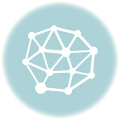 About Think Smarter World [Page]
About Think Smarter World [Page]
January 6, 2015
A Touch of Heart
A person told me a touching story at the gym today and I wanted to share it with you. I was sitting in the sauna and an older gentlemen came in and immediately started to speak to me. He was the kind of happy person you don’t see enough of these days. He was so exuberant that his head could not contain the many thoughts and words he wanted to share. They came out quickly and with urgency. He was a good friend to have if you’re a good listener…
He started by telling me of his early morning routine and how every day he is awoken by all the birds chirping in his yard. It turns out his wife is an avid bird lover and has five bird feeders spread around the back yard. He said so many birds come, that they all sit in the trees and wait their turn to get at the various bird feeders. While they wait, they sing with great enthusiasm until their turn arrives. Before I could comment, he went on to explain that they also had many other animal visitors as well. Their home backs up to an old farm and they often had visiting sheep, pigs, raccoons, wolves, and also cows. The animals would wander off the farm and make a visit to their yard. He and his wife didn’t mind he said. She, in fact, grew up on a 300 acre farm and that’s where they had first met close to fifty years ago. I got the feeling that the animals came so often because they instinctively knew they were welcome in my new friend’s small plot of land.
One day he said, a strange thing happened. A cow came into their yard and soon after collapsed and died. He went over to check and sure enough the cow had passed away. As he walked into the house to make a phone call to the appropriate township authorities, he looked out the window and was astonished at what he saw. All the other cows from the farm had come into his yard and formed a circle around their dead comrade. This was very surprising as never before had more than one cow come onto his land. He said that to him it looked as if the cows were conducting their own rite of last respect for their friend. When he went away to answer the phone and then returned, the cows had left. Their work completed, their respects paid. My new friend said, he was amazed at how the cows had known something had happened – as if they were all connected.
I commented, that people are interconnected as well and also have a built in communication channel to each other. It’s just that we don’t realize it and end up ignoring it most of the time. The cows on the other hand don’t suffer the noise of many unrestrained thoughts which crowd out that inherent understanding. He paused for a second and I saw the statement pierce into his consciousness – as if he recognized something but couldn’t put his finger on it.
He then started speaking rapidly again. And I listened intently.
-Jay Kshatri
www.ThinkSmarterWorld.com
The post A Touch of Heart appeared first on Think Smarter World.
January 4, 2015
Sharon Salzberg on Mindfulness [Quote]
January 2, 2015
The Wisdom of Water
One of my favorite wooded areas to walk in has a beautiful winding stream next to a walking path. Hardly anyone goes there so it’s a wonderful place to find some solitude and peace. One day as I was sitting by the bank of the stream, a small voice spoke in my head and whispered “Be Like the Water”. I looked at the flowing stream for a while trying to understand the message. I watched as the water flowed on its path, coming up against small obstacles – a fallen tree, various large rocks, and overgrown bushes reaching out and into the stream. But no matter what came in its way, the water was unfazed. It simply flowed around, under, or over the obstacle.
I then understood.
The stream was displaying non-attachment in action. The water did not resist what came in its way, its purpose was to flow onward, and it felt no need to have its purpose hindered by things in its path. It would simply, efficiently, and fluidly find its way around and through whatever arose. The obstacles were temporary, the water’s destiny was permanent and everlasting.
Our minds, alas, are often not so tranquil and clear in the course of their journey. I wonder if this is why so many of us are attracted to streams, lakes, rivers, and oceans. These bodies of water display the confident and uninterruptable nature of fluid motion that we all would like to achieve. Our minds on the other hand can easily become disturbed – by our own thoughts, by other people, by our environment, and by constantly arising new circumstances. It’s hard not to react to these things.
But what would the water do?
Flowing water feels no need to stay within the field of resistance. We on the other hand often feel that we need to push back against resistance – to engage with it, to ensure that we are right and the other person wrong, that we win. It’s the ego in full bloom. The water does not have an ego. It just knows it’s water, and its purpose in that stream, is to flow.
Could we do the same?
In daily life, to flow like water, would be to feel as if we are observing without judging, absorbing without being weighed down, and experiencing without being damaged. We would look at issues and problems in our personal and professional lives differently. When confronted with a difficult task, we would (as the water does) move fluidly into problem solving mode. Many times, however, we spend too much time enmeshed in the emotion and potential negative scenarios surrounding our daily challenges. Water does not care for such mind games. It simply sees obstacle, and alters its path to achieve its objective. Or, better yet, it doesn’t even see an obstacle, just temporary arising phenomena. No need to panic, just keep flowing.
-Jay Kshatri
www.ThinkSmarterWorld.com
The post The Wisdom of Water appeared first on Think Smarter World.
December 26, 2014
Let it Flow, Let it Flow, Let it Flow
The secret to achieving ‘Flow’ is to understand that what is flowing is Energy. Especially the high vibratory energy of Love.
Love is the fuel that the Universe and all of Consciousness runs on, everything else is just fumes.
Whenever we act in a manner that is not in the direction of love (in relation to ourselves or others), we create an energy block. Things then don’t go our way. Sure, through sheer human willpower we can sometimes temporarily break through those blocks. But it doesn’t last (Lance Armstrong, Tiger Woods, and Bill Cosby are all good recent examples). New energy blocks form. We then continue to push the rock up the hill instead of letting it roll freely beside us. And what do those energy blocks manifest as? Stress, Illness, Unhappiness, Lack of Abundance, Anger, Fear, Violence, and more.
When you look at all the major conflicts around the globe and the unresolved problems at home, you realize that in all cases, it is because of a lack of love between the participants. Specifically, they are situations where people see themselves as different and separate from others and where they believe their own needs are the most important. They have not yet come to realize that we are all One. All interconnected.
The same goes for the personal lives of every one of us. If you are not getting what you want, feeling what you want, or experiencing high levels of joy, happiness, and abundance. Then Unblock, and let the Love Flow. And, in the process, help others increase their energy. The more you give, the more you get…
-Jay Kshatri
www.ThinkSmarterWorld.com
The post Let it Flow, Let it Flow, Let it Flow appeared first on Think Smarter World.
December 22, 2014
Holistic Intelligence – Don’t Settle For Anything Less
As we enter the midpoint of the 2014 Holiday Season, the best and worst of humanity is on display. Making people work on Thanksgiving a few weeks ago to increase already robust corporate profits is just the tip of the iceberg. You may wonder, how can a nation that is full of “intelligent” people allow this to happen?
Intelligence can be a very subjective thing. As we come to know about more aspects of the human mind’s effect on our personal and professional lives, we start to see that intelligence is much more than what is routinely captured in IQ scores, grades, standardized tests, or whether you graduated from a particular college. We have realized that things like EI (or EQ) – Emotional Intelligence (or Quotient) – is an absolute necessity to function effectively in society, make wise decisions, and succeed in interpersonal relationships.
EQ more readily captures what we’ve traditionally referred to as character, values, judgement, empathy, and heart. When people, companies, industries, and countries proceed by maximizing just the IQ side of things (i.e.., figuring out how to do complex things) but then not making thoughtful judgements about whether they should actually put those things into practice, is where we see systemic failure in our society. Just rewind to the financial meltdown of 2008 to see that in full living color.
Let’s take the example of bosses. We’ve all worked for a boss who was highly skilled in the technical aspects of his or her job, but whose weak social skills and emotional immaturity made the work environment unpleasant. I once had a boss while working at a large multinational high tech compa ny who was off the charts in terms of IQ. He was brilliant in his ability to think through complex technical challenges and create effective product strategies. In addition, he would allow all of his managers great autonomy, and as a young manager early in my career, I felt this was great. For the most part, he was happy to have minimal contact with his staff and allow everyone to do their own thing.
ny who was off the charts in terms of IQ. He was brilliant in his ability to think through complex technical challenges and create effective product strategies. In addition, he would allow all of his managers great autonomy, and as a young manager early in my career, I felt this was great. For the most part, he was happy to have minimal contact with his staff and allow everyone to do their own thing.
But over time, I started to notice that this was less a form of enlightened management philosophy and more a case of inadequate communication skills. If you were to have a meeting with this person, it would appear if his body was uncomfortable in its own skin. He made awkward gestures and was not able to connect with you on an emotional level and his infrequent attempts at humor would reveal a dark cynicism. This seemed to be driven by his belief that he was much smarter than everyone around him and that he only needed to focus on achieving his professional objectives quickly so that he could take his rightful place among the highest level of executives at the company. Ultimately, that didn’t pan out. His boss, an equally intelligent individual but one with much better communication and relationship building skills, blocked his career path and one day he ubruptly left the company. A couple of years later, I learned that he had subsequently gotten divorced and his children were living with their mother back in their home town.
Fortunately, mid size and large corporations have become (somewhat) better over the years of screening and evaluating their leaders on this broader view of intelligence and emotional intelligence in particular has become a strong predictive evaluator of a person’s leadership effectiveness. In this way then, Holistic Intelligence = IQ + EQ. You may have a high IQ, but if you have a lower EQ, that brings down your overall intelligence and effectiveness and negatively alters how you are perceived and experienced by others. Not to mention how you experience your own life.
Alternatively, if you possess a high EQ – the proverbial warm, caring, and compassionate personality – but have a lower IQ, you may not be as effective in getting things done in your personal and professional life. The good news is that neurosocience is telling us that neither IQ or EQ is fixed, and you can improve both with focus and practice. And of course, there is no better equalizer than focus, will power, and hard work.
For our purposes in this article, let’s focus more on EQ – something that over the years has gotten less attention than IQ. But what exactly is EQ? In 2007 , Michael Akers and Grover Porter outlined an excellent definition of Emotional Intelligence in an article titled What is Emotional Intelligence (EQ)?:
Understanding the Five Categories of Emotional Intelligence (EQ)
1. Self-Awareness. The ability to recognize an emotion as it “happens” is the key to your EQ. Developing self-awareness requires tuning in to your true feelings. If you evaluate your emotions, you can manage them. The major elements of self-awareness are:
Emotional awareness. Your ability to recognize your own emotions and their effects.
Self-confidence. Sureness about your self-worth and capabilities.
2. Self-Regulation. You often have little control over when you experience emotions. You can, however, have some say in how long an emotion will last by using a number of techniques to alleviate negative emotions such as anger, anxiety or depression. A few of these techniques include recasting a situation in a more positive light, taking a long walk and meditation or prayer. Self-regulation involves:
Self-control. Managing disruptive impulses.
Trustworthiness. Maintaining standards of honesty and integrity.
Conscientiousness. Taking responsibility for your own performance.
Adaptability. Handling change with flexibility.
Innovation. Being open to new ideas.
3. Motivation. To motivate yourself for any achievement requires clear goals and a positive attitude. Although you may have a predisposition to either a positive or a negative attitude, you can with effort and practice learn to think more positively. If you catch negative thoughts as they occur, you can reframe them in more positive terms — which will help you achieve your goals. Motivation is made up of:
Achievement drive . Your constant striving to improve or to meet a standard of excellence.
Commitment . Aligning with the goals of the group or organization.
Initiative. Readying yourself to act on opportunities.
Optimism. Pursuing goals persistently despite obstacles and setbacks.
4. Empathy. The ability to recognize how people feel is important to success in your life and career. The more skillful you are at discerning the feelings behind others’ signals the better you can control the signals you send them. An empathetic person excels at:
Service orientation. Anticipating, recognizing and meeting other’s needs.
Developing others. Sensing what others need to progress and bolstering their abilities.
Leveraging diversity. Cultivating opportunities through diverse people.
Political awareness. Reading a group’s emotional currents and power relationships.
Understanding others. Discerning the feelings behind the needs and wants of others.
5. Social skills. The development of good interpersonal skills is tantamount to success in your life and career. In today’s always-connected world, everyone has immediate access to technical knowledge. Thus, “people skills” are even more important now because you must possess a high EQ to better understand, empathize and negotiate with others in a global economy. Among the most useful skills are:
Influence. Wielding effective persuasion tactics.
Communication . Sending clear messages.
Leadership. Inspiring and guiding groups and people.
Change catalyst. Initiating or managing change.
Conflict management . Understanding, negotiating and resolving disagreements.
Building bonds. Nurturing instrumental relationships.
Collaboration and cooperation. Working with others toward shared goals.
Team capabilities . Creating group synergy in pursuing collective goals.
How well you do in your life and career is determined by both. IQ alone is not enough; EQ also matters. In fact, psychologists generally agree that among the ingredients for success, IQ counts for roughly 10% (at best 25%); the rest depends on everything else — including EQ.
The executives and financiers driving the trend to open stores on Thanksgiving, and those of us who oblige them by showing up to those stores, have failed in the Empathy department. A key component of being Emotionally Intelligent. Embedded within Emotional Intelligence is Spiritual Intelligence (SI) – the ability to see the interconnectedness between all beings and the natural world. Which points to our common bond and duty to each other and the planet. When we start to see how all our actions and decisions impact not just ourselves but others and then take action in line with that understanding of interconnectedness, our SI increases dramatically. Furthermore, I believe the EQ component of Holistic Intelligence becomes even more important as our society evolves over the next fifty years:
Tasks that require a high level of IQ will become more and more outsourced to robots with artificial intelligence. Humans in turn will need to use more EQ based skills such as creativity and empathy to make sense of this new world and how to best use human talents to evolve our consciousness beyond where it is now. (See NYT columnist David Brook’s excellent essay – Our Machine Masters to get a glimpse of the possible future scenario). What this implies is that we should be making EQ skills a core component of the school curriculum for our children who will enter the work force in this new reality.
But this is not the only equation for intelligence out there. Here is one additional example we should consider:
Michael Scharf on his blog highlighted a new definition of intelligence created by physicist Alex Wissner-Gross which he published in a physics journal in April 2013. “A new Equation for Intelligence F = T ∇ Sτ – a Force that Maximises the Future Freedom of Action. Intelligence is defined for Mr. Wissner-Gross, as a Force with the Power to Change the World.
Describing intelligence as a physical force that maximises the future freedom of action, adds a new aspect to intelligence that is often forgotten: the power to change the world. Like many physical laws or equations the idea behind it is simple:
Intelligence is a force that maximises the future freedom of action.
It is a force to keeps options open.
Intelligence doesn’t like to be trapped.
But what is necessary to keep options open and not to be trapped? Intelligence has to to predict the future and change the world in a direction that leads to the “best possible future”. In order to predict the future, an intelligent system has to observe the world and create a model of the world. Since the future is not deterministic the prediction has to be based on some heuristics. Prediction is a kind of statistical process. In order to change the world, the intelligence has to interact with the world. Just thinking about the world, without acting, is not intelligence, because it produces no measurable force (well, sometimes it is intelligent not to act, because the physical forces drive you already in the right direction, but that is a way of optimising resources). The better it can predict the future and the better it can change the world in the desired direction, the more intelligent the system is.”
Folding the Wissner-Gross model into our Holistic Intelligence equation, we now would have HI (Holistic Intelligence) = IQ + EQ + AQ. Where AQ is your Action Quotient (as described by Wissner-Gross). I find this a very interesting model as it points out that intelligence is innately equated to action. There are a lot of people talking about things, but to investigate all options and then actually do something, get involved, and enact change is what is really required to make intelligence come to life. Overall, the model takes into account the four major components of our human existence – the Mental, Emotional, Physical, and Spiritual.
Having worked on my EQ for the last few years, I’m now going to make enacting Mr. Wissner-Gross’s further definition of action-oriented intelligence in all parts of my life one my resolutions for 2015. Please join me!
-Jay Kshatri
www.ThinkSmarterWorld.com
The post Holistic Intelligence – Don’t Settle For Anything Less appeared first on Think Smarter World.



